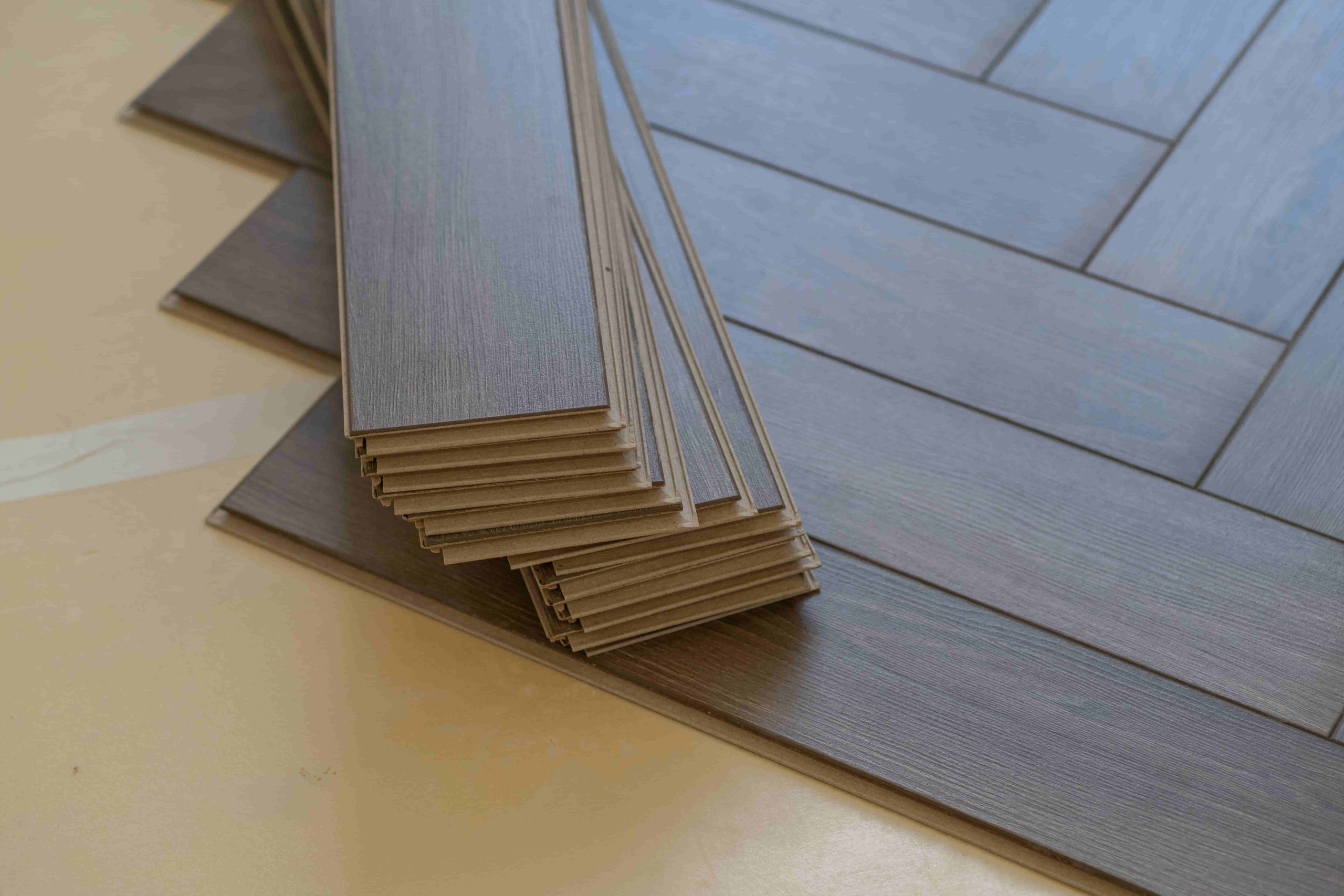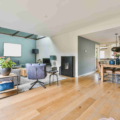If you’ve been thinking about upgrading your floors but want something modern, waterproof, affordable, and easy to install, Luxury Vinyl Plank (LVP) flooring should be on your radar.
More than just a passing trend, LVP is dominating 2025 flooring choices across kitchens, bathrooms, basements, living rooms — even commercial spaces. Why? Because it offers the beauty of hardwood without the price tag or maintenance headaches.
In this mega guide, you’ll learn everything you need to know about LVP, including:
- What LVP is made of
- What makes it better than laminate or hardwood
- How to install it yourself — without hiring anyone
- Style & design ideas that are trending in 2025
- Cleaning tips to keep it looking new for 20+ years
- Mistakes to avoid that most DIYers make
Whether you’re a homeowner, renter, real estate investor, or a DIY flooring enthusiast, this guide will help you make confident decisions and save money while doing it.
🔍 What Exactly Is LVP Flooring?
LVP stands for Luxury Vinyl Plank, and that name tells you a lot already:
- Luxury: It looks and feels like high-end flooring.
- Vinyl: It’s made from a special type of plastic (don’t worry — the good kind).
- Plank: It comes in long pieces like wood floorboards.
So basically, LVP is synthetic flooring that looks like hardwood but performs like a champ — waterproof, durable, and installable over almost any surface.
It’s not just for budget makeovers either. With new embossed textures, matte finishes, and ultra-realistic prints, LVP has become a top pick even for million-dollar homes.
🔧 How It’s Built: The 4 Layers of an LVP Plank
Each piece of LVP is made from multiple layers stacked together for performance and beauty. Think of it like a sandwich made for your floor:
- Wear Layer (Top Layer)
- Transparent and tough — this layer protects against scratches, dents, stains, and UV damage.
- Choose 12–20 mil thickness for home use; 28+ mil for commercial spaces.
- Transparent and tough — this layer protects against scratches, dents, stains, and UV damage.
- Print Layer (Design Layer)
- This is where the wood or stone pattern is printed in high resolution.
- The best brands use EIR (Embossed-in-Register) to match the texture to the image for realism.
- This is where the wood or stone pattern is printed in high resolution.
- Core Layer (The Engine Room)
- There are three core types you can choose from:
- SPC (Stone Plastic Composite): Hard, durable, best for high-traffic or moisture-prone areas like kitchens and bathrooms.
- WPC (Wood Plastic Composite): Softer underfoot, great for bedrooms and comfort zones.
- Flexible LVP: Older type, cheaper, but less rigid and not as durable.
- SPC (Stone Plastic Composite): Hard, durable, best for high-traffic or moisture-prone areas like kitchens and bathrooms.
- There are three core types you can choose from:
- Backing Layer (Bottom Cushion)
- Some LVP comes with an attached underlayment (like cork or foam) for soundproofing and comfort.
- Some LVP comes with an attached underlayment (like cork or foam) for soundproofing and comfort.
If it doesn’t have this, you’ll need to buy underlayment separately.
🚀 7 Reasons Why LVP is Blowing Up in 2025

- It’s Waterproof.
Seriously — water doesn’t scare it. You can mop it, spill on it, even install it in bathrooms and basements without worrying. - It’s DIY-Friendly.
Most LVP uses click-lock systems, which means no nails, glue, or mess. You can lay it over tile, wood, concrete — no pro required. - It Looks Like Real Wood.
Thanks to new print technology, it can mimic oak, walnut, maple, reclaimed barn wood, and more — often better than laminate. - It’s Scratch & Dent Resistant.
Perfect if you’ve got kids or pets running wild. - It’s Budget-Friendly.
Most LVP costs between $2 to $5 per square foot, way less than real wood or tile. - It Works in Every Room.
Yes — even the bathroom. Even the laundry room. Even your weird-shaped entryway. - It’s Low Maintenance.
No waxing. No refinishing. Just sweep and mop occasionally.
🆚 LVP vs Other Flooring Types: What Makes It Stand Out?
Let’s break down how LVP compares to the most popular alternatives so you can decide what fits best in your space.
LVP vs LVT (Luxury Vinyl Tile)
LVP mimics wood planks, while LVT mimics tiles and stones. Both are waterproof and made from the same core materials, but their appearance and use cases differ.
- Choose LVP for bedrooms, living rooms, or any space where you want the warmth of wood
- Choose LVT for bathrooms or laundry rooms where a tile look fits better
LVP vs Laminate
Laminate flooring looks like wood too, but it has a fiberboard core that swells when wet. LVP is completely waterproof, so it lasts longer in bathrooms, kitchens, or basements.
- Laminate is often cheaper but can’t handle moisture
- LVP costs a bit more but saves money in the long run with better durability
LVP vs Hardwood
Hardwood is timeless but expensive and high maintenance. LVP gives you the same wood appearance without worrying about scratches, moisture, or refinishing every few years.
- Hardwood can last 50 years with care, but it requires constant attention
- LVP lasts 15 to 30 years with almost no effort
LVP vs Tile
Tile is strong and waterproof, just like LVP. But tile is cold, hard to walk on, expensive to install, and not easy to DIY.
- LVP is softer, warmer, easier to install, and more affordable
Tile is better for extremely high-traffic or outdoor areas
🛠️ How to Install LVP Flooring: Full DIY Tutorial
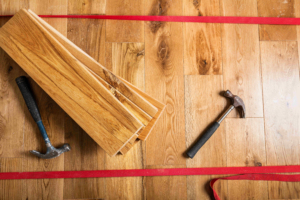
No experience? No problem. This part explains each step like you’re learning from a friend.
What You’ll Need
- Utility knife or vinyl cutter
- Spacers
- Measuring tape
- T-square or straightedge
- Tapping block and rubber mallet
- Pull bar for tight spaces
- Underlayment (only if your LVP doesn’t come with one)
Step 1: Prepare the Surface
Make sure your subfloor is clean, dry, and flat. Remove old flooring if needed. Vacuum everything well.
If there are dips or high spots, use leveling compound to even them out.
Step 2: Acclimate the Planks
Place the LVP boxes in the room where they’ll be installed and leave them for 48 hours. This helps the planks adjust to room temperature and humidity, reducing future expansion or contraction.
Step 3: Plan Your Layout
Start from the longest, straightest wall. Lay out a few rows without clicking them in to see how the planks will fall. Make sure you won’t end up with a tiny strip at the opposite wall. If so, trim the first row slightly to balance it out.
Step 4: Lay the First Row
Place spacers along the wall to allow for expansion. Lay the first plank with the tongue side facing the wall. Connect the next plank by angling and snapping it into place.
Step 5: Keep Going
Continue connecting planks across the room, staggering the seams by at least 6 inches for strength and a natural look. You can cut planks to size using a utility knife — just score and snap.
Step 6: Tighten Everything Up
Use the tapping block and mallet to make sure each plank is snug. On the last row, you’ll likely need to cut the planks lengthwise. Use a pull bar to fit them tightly.
Step 7: Finish the Edges
Remove spacers and reinstall baseboards or trim. You can add quarter round molding if needed for a clean look.
🧠 Expert Pro Tips
- Mix planks from different boxes to get natural variation
- Use painter’s tape to hold planks in place temporarily if needed
- Don’t install over carpet
- Always install parallel to your main light source to enhance the look
- If installing in a bathroom, use waterproof caulking around the perimeter
Design & Style Ideas for LVP Flooring in 2025
Luxury Vinyl Plank isn’t just practical. It’s become a design statement. The textures, colors, and patterns available today rival even high-end hardwood and stone floors.
Here’s how homeowners are styling LVP in 2025.
🌈 Popular Colors
Interior designers are leaning into both warm and cool tones to match modern themes.
Some trending choices:
- Natural Oak — soft, timeless, and versatile for any room
- Grey Mist — ideal for minimalist or coastal interiors
- Whitewashed Pine — perfect for farmhouse or Scandinavian designs
- Deep Walnut — brings richness to bedrooms or formal spaces
- Rustic Hickory — adds character to kitchens or basements
📐 Installation Patterns
Changing how you lay the planks changes the entire vibe of the room.
Here are patterns trending this year:
- Herringbone — bold and elegant, great for entryways or dining rooms
- Chevron — modern and clean, works well in open-concept layouts
- Diagonal — makes small rooms feel larger
- Random mixed-width — adds texture and uniqueness to large spaces
- Straight lay — classic and easy, best for a simple, clean finish
🏠 Room-by-Room Suggestions
Living Room:
Use wide planks in warm oak tones. Add an area rug with bold patterns to balance texture.
Kitchen:
Use high-durability SPC core LVP in stone or distressed wood finish. Combine with matte black fixtures for a modern contrast.
Bathroom:
Go for light-colored planks in herringbone layout. Add waterproof trim and a matching backsplash for style and moisture protection.
Bedroom:
Choose soft WPC-core planks with a cushioned underlayment. Stick to natural wood tones for warmth.
Basement:
Pick a dark wood-look SPC LVP with mold-resistant properties. Lighten up the space with bright walls and LED lighting.
🧽 LVP Maintenance Made Easy
LVP is low-maintenance, but a few smart habits will keep it looking new for decades.
🧼 Daily & Weekly Maintenance
- Sweep or vacuum using a hard floor setting
- Mop using a damp microfiber mop with LVP-safe cleaner
- Avoid soaking the floor — no need for lots of water
- Never use abrasive pads or harsh chemicals
🧬 Deep Cleaning (Monthly)
Use a gentle vinyl floor cleaner or a mix of warm water with a splash of white vinegar.
Mop in sections, and dry with a clean cloth if needed.
🛡️ Protect from Damage
- Use felt pads on furniture legs
- Add entryway rugs to trap dirt
- Keep pet nails trimmed
- Avoid dragging heavy furniture — always lift it
What to Avoid
- Steam mops (can damage seams over time)
- Wax, oil, or polish — not necessary and may leave residue
- Letting water sit on the surface for too long
Is Luxury Vinyl Plank Good for Homes with Pets?
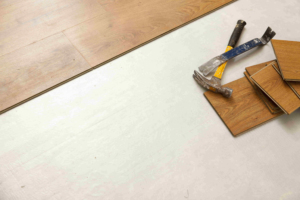
Absolutely — LVP is one of the most pet-friendly flooring choices available today. It stands up well to accidents, muddy paws, claws, and general wear.
Why Pet Owners Choose LVP:
- Scratch Resistance: The wear layer protects against pet claws, especially with SPC-core types
- Easy Cleanup: Urine, water bowls, or fur are easy to clean and don’t stain or absorb
- Slip Resistance: Many LVP brands offer textured surfaces to give pets better grip
- Dark-Toned Planks: Hide fur and minor scratches better than light colors
If you have dogs or cats, go with:
- 20 mil wear layer or higher
- SPC rigid core for durability
- Matte or textured finishes to reduce slips
Pet owners love it because it offers peace of mind — and your home still looks polished and stylish.
🔇 Want Quiet Floors? Soundproof Vinyl Options for Upstairs or Apartments
If you live in an upstairs unit or multi-level house, footstep noise can become a problem. Fortunately, certain types of LVP can help reduce sound transmission.
How to Soundproof LVP:
- Choose LVP with an attached cork or foam backing — it absorbs sound better
- Install over high-density underlayment like QuietWalk or FloorMuffler
- Opt for WPC-core vinyl — it naturally feels and sounds softer underfoot
- Add rugs and furniture pads to absorb even more sound
This is especially helpful in bedrooms, kids’ rooms, or apartment floors where you want privacy and peace. Just note: check your manufacturer’s recommendations before layering underlayment with pre-attached pad planks.
♻️ Eco-Friendly LVP Flooring: What’s Safe for Your Home?
Not all vinyl is created equal. If you care about indoor air quality, low emissions, or sustainability, you can choose eco-friendly LVP options.
What to Look For:
- Low-VOC Certification: Products that meet strict air-quality standards
- FloorScore® or GreenGuard® Gold labels
- Phthalate-Free Construction: Healthier for babies, pets, and sensitive individuals
- Recycled Content: Some brands use recycled cores or packaging
While vinyl can’t be recycled once used, choosing certified low-VOC planks can help reduce your home’s chemical exposure — especially important in nurseries, bedrooms, and small apartments.
Brands that offer greener options:
- Shaw Floorte
- Cali Vinyl
- COREtec Plus
🧱 Can You Install LVP Over Tile? Yes — But Know This First
Many homeowners ask: Can I lay LVP over my existing tile floor? The answer is yes — but only if you follow a few prep steps.
Key Guidelines:
- Tiles must be flat — if the grout lines are too deep, use a leveling compound
- The surface should be clean and dry
- Avoid loose or cracked tiles — they will affect plank stability
- Use a vapor barrier underlayment if moisture is present
In many cases, installing over tile saves time and money. Just make sure to double-check transitions at doorways or baseboards, as LVP will slightly raise floor height.
🛏️ Want Softer Floors? Try Cushioned Vinyl for Comfort
If you’re installing flooring in bedrooms, nurseries, or homes for seniors, you may want something comfortable underfoot.
WPC vs SPC for Comfort:
- WPC (Wood Plastic Composite) is thicker and more flexible. It feels warmer and more forgiving than SPC
- SPC (Stone Plastic Composite) is harder and more durable but less comfortable for standing long hours
- Look for attached foam backing or install a comfort underlayment
If you’re doing yoga in the living room or creating a cozy bedroom retreat, cushioned vinyl will make a noticeable difference in everyday comfort.
🏠 Is LVP Good for Rentals? Here’s Why Landlords Love It
Luxury Vinyl Plank is a favorite among landlords and property managers — and for good reason.
LVP Benefits in Rental Properties:
- Low cost with high-end appearance
- Durable against tenant abuse
- Easy to replace damaged sections without replacing the entire floor
- Waterproof — perfect for bathrooms, kitchens, laundry rooms
- Low maintenance — requires little to no effort from renters
If you’re flipping a property or updating a rental unit, LVP gives you high ROI and keeps maintenance calls low.
✅ Recap: Pros and Cons of LVP Flooring (Honest Breakdown)
Let’s wrap this up with a realistic list of advantages and limitations.
Pros:
- Waterproof and scratch resistant
- DIY-friendly installation
- Stylish and realistic appearance
- Affordable with high resale value
- Works in all rooms, even wet areas
- Low maintenance for busy homes
Cons:
- Not biodegradable or recyclable
- Can dent under heavy furniture
- Requires flat, stable subfloor
- May feel cold without proper underlayment
Frequently Asked Questions About LVP Flooring
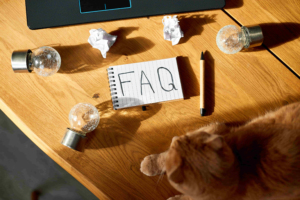
Q: Is LVP better than laminate flooring?
Yes, LVP is better for wet or high-traffic areas because it’s fully waterproof and more durable than laminate, which swells when exposed to moisture.
Q: Can you install LVP over ceramic tile?
Yes, you can install LVP over tile if the surface is flat, clean, and dry. Fill deep grout lines with leveling compound before starting.
Q: How long does LVP flooring last?
With proper care, high-quality LVP can last 20 to 30 years. The wear layer thickness, brand, and how it’s maintained all affect longevity.
Q: Is LVP flooring eco-friendly?
Not all LVP is eco-friendly. For safer options, choose low-VOC planks with certifications like FloorScore or GreenGuard Gold.
Q: Can I install LVP flooring by myself?
Yes, most homeowners can install LVP on their own thanks to the click-lock system. It’s a beginner-friendly DIY project that doesn’t require glue or nails.
Q: Does LVP work well in bathrooms and kitchens?
Yes, LVP is an excellent choice for moisture-prone areas like bathrooms, kitchens, and laundry rooms due to its waterproof core and easy maintenance.
Q: What is the best LVP flooring brand in 2025?
Top-rated brands include Shaw Floorte, COREtec, Lifeproof, and Cali Vinyl. Look for a good wear layer (12 to 20 mil) and strong core construction (SPC or WPC).
🧠 Final Thoughts: LVP Flooring is the Smart Homeowner’s Choice
LVP flooring is the perfect blend of practicality, style, and value. Whether you’re flipping a house, upgrading a rental, remodeling your dream kitchen, or simply fixing up your first apartment, it delivers on every front.
Here’s why it works:
- You can install it on your own
- You don’t have to worry about water or spills
- It works with pets, kids, and heavy foot traffic
- You get the look of hardwood without the cost or stress
- It’s a modern flooring solution that fits real life, not just magazine homes
📢 Ready to Transform Your Floors?
You’ve got the guide. Now it’s your turn.
👉 Explore your options.
👉 Choose a style that fits your space.
👉 Use this blog to guide your install, clean-up, and care.
👉 Bookmark this site for more real, helpful flooring advice.
🛠️ Visit DIY Flooring Ideas for more flooring and home improvement ideas

